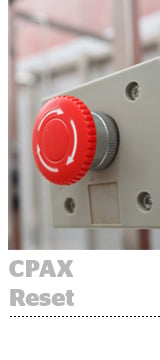 This story is part of a series on publisher coalitions and co-ops around the world. Read our earlier pieces on Pangaea and the Association of Online Publishers in the UK, La Place Media in France, SouthernX in Africa, Project Agora in Greece and Romania and Apex in Australia.
This story is part of a series on publisher coalitions and co-ops around the world. Read our earlier pieces on Pangaea and the Association of Online Publishers in the UK, La Place Media in France, SouthernX in Africa, Project Agora in Greece and Romania and Apex in Australia.
One year ago, the Canadian Premium Audience Exchange (CPAX), a publisher coalition comprising the CBC, Rogers Communications and Shaw Communications, found itself with underwhelming CPMs.
It didn’t make sense: With 400 buyers competing in an open environment, it should have driven up demand. But many players were intermediaries who lured clients promising access to premium Canadian publishers, then diverted ad budgets elsewhere.
CPAX, then two years old, decided that to succeed, it couldn’t just curate the sellers on the exchange. It needed to limit access only to buyers that used CPAX as a way to access brand-safe, premium inventory.
In July, it closed the exchange to all but 40 agency and brand buyers who registered their seats, a 90% reduction. And it brought on Index Exchange – at the time called Casale Media – as its new technology partner, replacing AppNexus. After a rough initial quarter, CPMs rose.
“The second we flipped the switch, the publishers took a revenue hit. But they stuck with their strategy,” said Andrew Casale, CEO of Index Exchange. “It did not take long before we were crushing the results from before with one-tenth the buyers.”
CPMs have since doubled and CPAX services a billion impressions a month and reaches 20 million people, nearly two-thirds of Canada’s population.
“We learned from the transition that more is not always better,” said Andrew Waiser, director of digital monetization strategy and ad operations for Rogers Communications. “Before, we were completely open to the demand side. We’ve actually seen that access control has brought in more demand and higher revenue.”
Controlled access simplified the supply chain and made the buying process more transparent. Buyers knew they were getting what they asked for. CPAX lists on its website all the buyers and sellers on the exchange, to make sure no one fraudulently claims access to the inventory.
Sellers also knew who the buyers were, down to all the advertisers using a trading desk. That was important to Canadian government-sponsored broadcaster CBC.
“When we were out into open markets, the quality of the ads that came through and the standards the CBC was held to was not a good match,” said Jeff MacPherson, CBC Television’s director of monetization and services. “This is not only brand-safe for clients, it’s brand-safe for publishers too.”
Educating buyers about the switch, and CPAX’s value proposition, was key. “What we learned over the years was that it was all about relationships and the right partners,” MacPherson said.
Index Exchange met with all the media agencies in the market, explaining the reset. It turned out that they too had problems with the many layers of players, who would undercut them. “It was universally loved by the agencies,” Casale said.
The rising CPMs in CPAX inspired more publishers to join. Fifteen publishing groups now belong to the coalition, and all have one vote, regardless of size. A couple more are in the pipeline, giving CPAX about three-quarters of the majors in the market.
Publishers implement CPAX differently into their sell-side strategies. Rogers and CBC slot CPAX below its private marketplaces. Publishers also set their own floor prices based on individual yield optimization needs.
CPMs vary dramatically by source. CPAX divides the inventory into content verticals, like women’s lifestyle, sports, music or French content. Women’s lifestyle, for example, yields high CPMs in part because the Canadian market has low inventory in that area, Casale said.
CPAX isn’t a joint venture. Publishers put a percentage of revenues back into CPAX to fund advocacy and events to raise awareness. Buyers pay for access, and CPAX grants seats with a variety of models, including seat fees or inventory commitments. Index Exchange takes a percentage of the media flowing through CPAX.
As CPAX grows, it passes on this advice to fellow publishers, MacPherson said: “What we’ve seen is that you need to have relationships, trusted partners and controlled access, both from who’s selling and who’s buying.”













